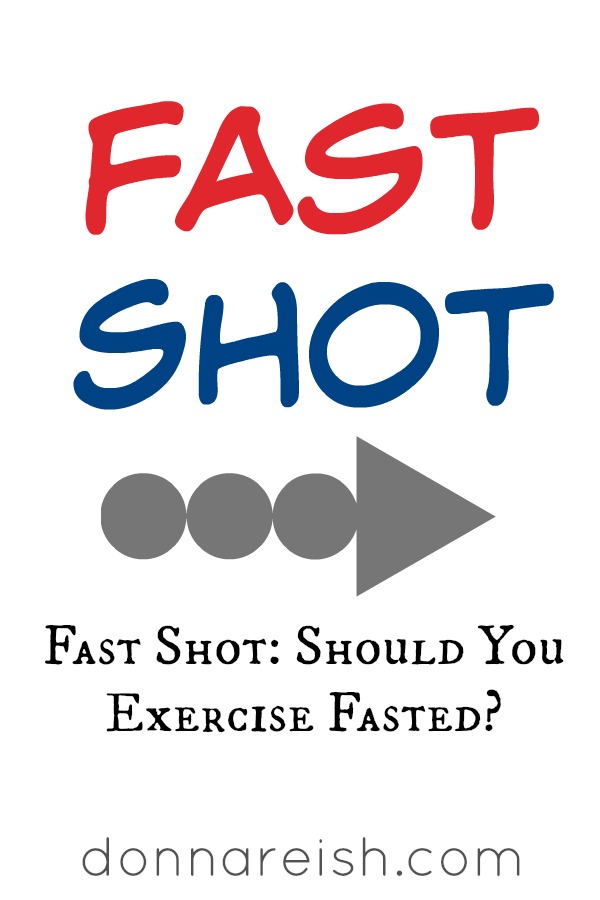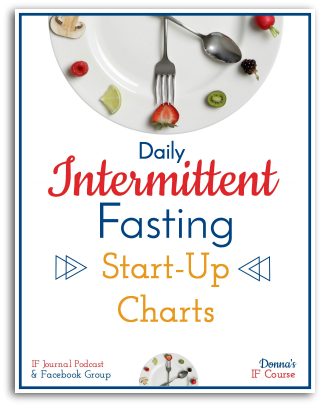
In this Fast Shot, Donna Reish, blogger, health seeker, Intermittent Fasting teacher, and author of over 100 curriculum books for students in preschool through grade twelve, teaches about exercising fasted. She begins by explaining the three main types of exercise and what each one does in terms of calorie burning vs toning, etc.—cardio, strength training, and HIIT. She then describes the three ways to get into ketosis—keto diet, fasting, and exercise ketosis. Then she tells when she likes to do strength training and rowing and why, including how working out during the fast gets you into fat burning sooner (and sometimes very quickly depending on the intensity of the workout and what you ate the night before). Finally, she gives some tips for adding exercise to your Intermittent Fasting routine.
A. Understanding exercise in a nutshell
1. Cardio—fat burning, sustainable for long period of time; 50-60% of heart rate; able to talk through it; doesn’t build muscle per se
2. Strength training—carb burning, long term benefits, look smaller regardless of weight; muscle is tighter and smaller than fat, so when you strength train, you build muscle—when you lose fat, that muscle looks leaner and thinner than the fat that was there
3. HIIT—only sustainable for 30 to 90 seconds at a time (or it isn’t true HIIT); carb burning; 85-90% of heart rate; can’t talk through it
B. Three types of ketosis in a nutshell
1. Keto diet
i. 75-80% fat; 10-15% protein; 5% carbs
ii. Puts you into “ketosis” where your body burns ketones/fats rather than carbs
iii. Some say this happens through caloric reduction; others say it happens due to a caloric “padding” you get through mostly eating fat—body gets used to burning fat
iv. Puts you into ketosis 4x faster than traditional diet
2. Fasting
i. Usually happens between 16-18 hours of non-caloric fasting (though some say it still happens if you eat fat, like cream)
ii. Happens for the same reason as keto diet—you’ve burned through glycogen stores and now use body fat and ketones instead
iii. Puts you into ketosis 20x faster than traditional diet
3. Exercise ketosis
i. Especially happens through strength training because you’re burning the glucose stored in your muscles
ii. HIIT also helps it
iii. Can make you feel like you’re starting fasting all over again!
C. When Should I Exercise?
1. My preference is around 12-16 hours fasted—not hungry at all and not full from eating either
2. Can do it anytime
3. Doing it fasted puts you into fat burning quicker because you’re burning through the last of the glycogen stores
4. Doing it fasted can make you feel like you are starting fasting all over again!
D. Tips
1. Don’t do strength or HIIT in first couple of weeks of fasting (you are doubling up on burning through glycogen and can be super hungry and tired—and you won’t know what is causing it!)
2. Be prepared to feel bad at first!
3. Drink mineral water and take minerals!
i. Magnesium
ii. Mineral water—flat or sparkling (I used two bottles each morning when I began working out hard)
iii. Pink Himalayan salt
4. Start out slowly as you will feel like you are back to starting fasting all over again!
Places to Find Me and Find Out More About Intermittent Fasting!
Sign up and play the NEW and FREE Calories In/Calories Out Game!
Subscribe to the blog and get free IF start up charts
Sign up for my month-long, step-by-step course (starts the first Monday of each month)
“A Month to Learn It—a Lifetime to Live It”—www.theintermittentfastingcourse.com










